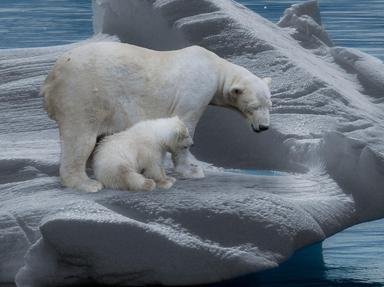Quiz Answer Key and Fun Facts
1. Which marine animal is one of the deepest diving Arctic sea mammals and is also called "corpse whale" because of the colour of its skin?
2. Arctic wolves live in the subzero regions of Canada and Alaska. Which of these statements is true about their species?
3. The shaggy coat of the muskox is designed to protect them from Arctic conditions and they have curved horns to fend off predators. The two horns meet at the centre of their head at a juncture called what?
4. The Arctic tern is medium sized and unique because it flies between the Arctic and Antarctic each year, covering distances of around 70,000km. It stays with approximately 50 other terns in a group called what?
5. The walrus is one of the giants of the Arctic, using their flippers to amble along the icy surface and then sinuously diving into cold waters to feed. What is the name for mammals that are fin-footed?
6. The Arctic hare has massive feet similar to snow shoes which they use for running at speeds of up to 40mph. They also use their feet for digging holes in snow to sleep and breed. What is the name of the baby Arctic hare?
7. This is the only breed of mammal where both the male and the female grow antlers. What animal am I describing?
8. These small Arctic animals tunnel away beneath the snow to keep away from predators, making corridors lined with muskox fur and dry grass. They are 3-4 inches long with grey or brown fur which turns white in winter. Which rodent am I describing?
9. The snowy owl is the largest bird that dwells on the ice cold tundra of the Arctic. Its white plumage makes excellent camouflage for when he swoops down on his prey. What colour are his eyes?
10. A human being can die if they eat the liver of a polar bear. True or false?
Source: Author
Plodd
This quiz was reviewed by FunTrivia editor
Tizzabelle before going online.
Any errors found in FunTrivia content are routinely corrected through our feedback system.


